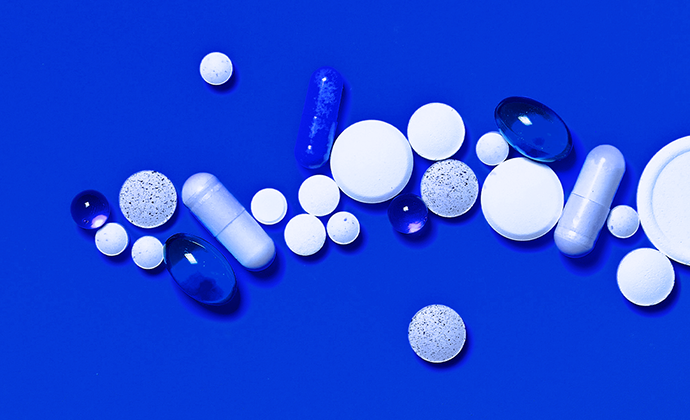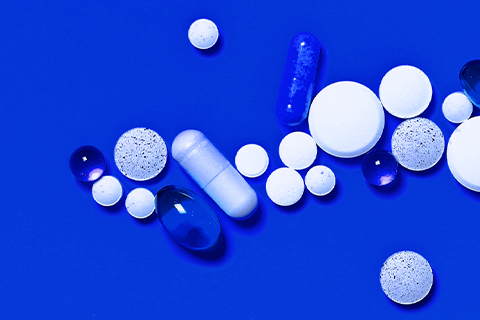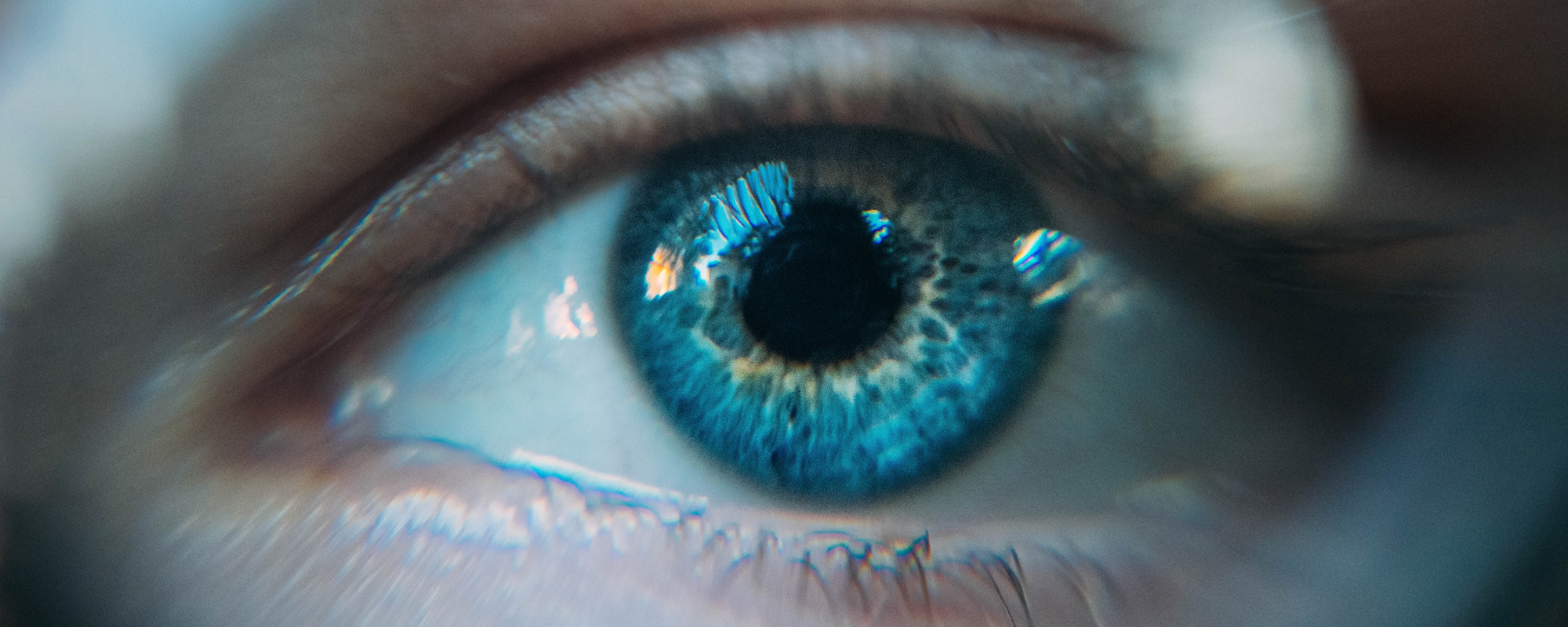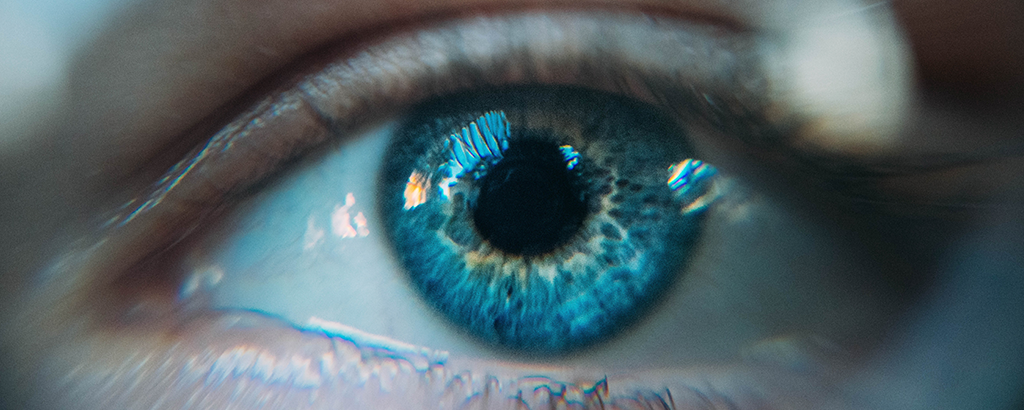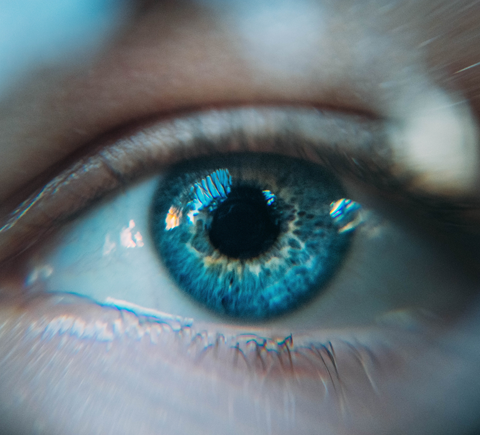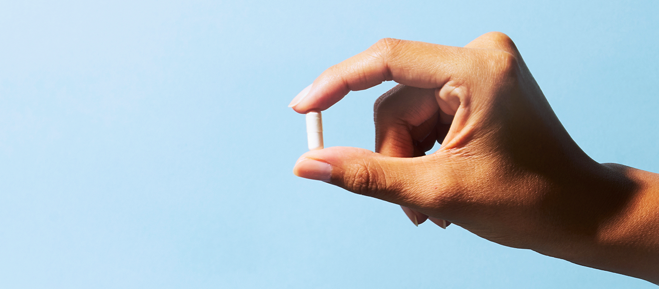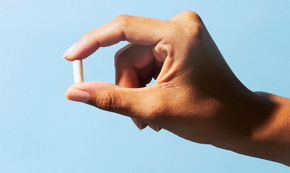What Is Biohacking and Where Do Supplements Fit In?
Biohacking, or DIY biology, is a vast concept that struggles to ground itself in one concrete definition because depending on who you ask, you'll get a different answer. Perhaps the differences are more nuanced because the people behind the movement are as varied as they come.
People who practice biohacking participate in a range of activities. You'll hear stories about cryotherapy, infrared saunas, chip implants, fecal transplants, blood transfusions with young people, or gene editing.
Yet biohacking is philosophically nothing new. It's merely the latest buzzword to describe what humans have been doing for centuries: To advance our bodies through scientific experimentation. In its intent, supplements and medicine follow the same principle.
But biohacking begs to focus the aim in a more futuristic condition. Vox defines it as "one branch of transhumanism, a movement that holds that human beings can and should use technology to evolve our species."
The Verge captures the essence of a Transhumanist more vividly in summarizing Mark O'Connell's book, To Be a Machine, describing transhumanists as "[People] Transhumanists [who] want to be stronger and faster; they want to be cyborgs. And they want to solve the problem of death."
The initial thought most of us have when it comes to biohackers comes closer to O'Connell's definition of a Transhumanist. It can sound dangerous. But the fact is, biohacking in its more moderate form is a lot more accessible than perceived. Sometimes, it's just as simple as practicing intermittent fasting.
Why are people biohacking?
Some people are just looking to use technology to optimize the daily facets of their lives.
Jeffrey Tibbetts, a registered nurse, exhibits this desire as he plays host to Grindfest, named after the biohacking subculture known as Grinders. Grinders use DIY cybernetic devices that are "surgically" placed in their bodies.
Tibbetts, himself, tells The New York Times how he installed an RFID/NFC chip in his hand, which allows him the flexibility to open doors that usually require key fobs.
But outside of these extreme "body enhancers," the more enticing answer of why people are experimenting with biohacking is to live longer, calling back to the Transhumanist thought of "escaping death."
Members of the biohacking community are very open about this goal. Dave Asprey, the founder of Bulletproof Coffee and pioneer in the biohacking movement, wants to be superhuman. He tells Business Insider that "he wants to live to 180 or more."
But he also emphasizes the operative word, control, when defining biohacking. His website defines its verb form as "To change the environment outside of you and inside of you so you have full control of your biology, to allow you to upgrade your body, mind and your life."
This "control" language is common in "biohacker-speak." BBC News spotlights Corina Ingram-Noehr, a 33-year-old events organizer living in Berlin who emphasizes it as well.
She states, "Biohacking for me is taking control of your own biology. It's taking shortcuts to get to a place that you want to be—so shortcutting your health. That's kind of how I think of it at least."
The excessive use of correlating biohacking with control begs the question: Are people's interest in biohacking more aligned with control rather than wellness?"
Thomas Stackpole, a writer for The New York Times, echoes this notion that the idea of being able to control something may be the most enticing aspect of biohacking.
Stackpole posits, "In an era when so many of us feel the world spiraling out of control, maybe it's just the promise of being able to control something—to will a change, any change, into being—that's the draw."
Who is biohacking?
Famous tech entrepreneurs, like Twitter CEO Jack Dorsey, consider themselves biohackers.
Dorsey, 42, practices intermittent fasting, an eating regimen where you don't eat for long stretches of time.
According to the National Post, "He claims to eat only one meal each workday, consisting of fish or meat, vegetables, and occasionally a small amount of berries, chocolate or wine. And he's been experimenting with fasting all weekend long, drinking only water from Friday to Sunday. His drink of choice is the lemon, water and Himalayan salt concoction he calls saltjuice."
He says fasting makes him feel "amazing—clear-headed and mentally focused."
However, not everyone's pursuits in the world of biohacking are always geared towards optimization. Some begin their journey in hopes of discovering alternatives to traditional medicine. Business Insider references Tim Ferriss, author of the book, Tool of Titans, that he adopted intermittent fasting and a ketogenic diet "to help alleviate the energy-draining symptoms of the Lyme disease he contracted."
Likewise, Dave Asprey got into biohacking because he was concerned about his health after being diagnosed as being at a high risk for stroke and heart attack.
But for others, like Josiah Zayner, PhD in biochemistry and celebrity of the community, biohacking is more about democratizing science.
In an interview transcribed in The Atlantic, Zayner expresses that the current regulatory bodies are too slow and limit progress in the field. He argues, "One of my big problems with academic and medical science is you read lots of these papers. Lots of stuff, we cured X or we did X, but it won't be available to the general public for 10, 20, 30, 40 years. To me that seems ridiculous."
Zayner is known for toeing the line with FDA regulations with his stunts. He received recent notoriety for injecting a gene-editing DIY kit, CRISPR, into his arm on a live stream. Zayner tells The Atlantic, "I see myself as a scientist but also a social activist with some of the experiments I've done. Like, how can I do this experiment from a scientific way but also to make people think?"
Why is biohacking centered around Silicon Valley?
Not all biohackers are from the Bay Area, California, but biohacking naturally aligns with the area's burgeoning tech scene.
The New Economy believes the word "biohacking" grabbed mainstream attention with the introduction of Rob Rhinehart's Soylent, a meal-replacement drink. Rhinehart, a Silicon Valley engineer, designed Soylent to optimize how we eat lunch at our desks. Soylent investors were quick to jump aboard funding over $50m into the company, and few were surprised by its swift adoption.
Dr. Niketa Kumar, a clinical psychologist based in Silicon Valley, tells The New Economy, "We are in a culture where optimization is highly valued. Biohacking is marketed as a method for gaining a competitive edge."
"Hacking" doesn't hold a negative connotation in Silicon Valley. Competition in the area invites the brightest minds to participate in its "hacking culture."
Drew Endy, a bioengineering professor at Stanford and self-appointed biohacker, reflects this view of a more problem-solving orientation of the word "hacking." Endy tells PBS, "I come from a tradition where hacking is a positive term, and it means learning about stuff by building, and trying to make things and seeing what happens."
Serge Faguet, an entrepreneur, explains how this thought is in the very nature of Silicon Valley. He tells The Guardian, "People here [in Silicon Valley] have a technical mindset," he explains, "so they think of everything as an engineering problem."
Is biohacking dangerous?
It can be.
For example, the FDA warned consumers against receiving young donor plasma infusions. Notable figures in Silicon Valley have been participating in blood transfusions with younger people hoping that it'll provide anti-aging properties.
The statement reads, "Our concerns regarding treatments using plasma from young donors are heightened by the fact that there is no compelling clinical evidence on its efficacy, nor is there information on appropriate dosing for treatment of the conditions for which these products are being advertised."
Likewise, fecal matter transplants have received equal criticism, especially after biohacker stuntman, Josiah Zayner, gave it a try.
The Verge writes, "Zayner doesn't recall the first time he heard about FMTs (Fecal Matter Transplants)—and he's never been diagnosed with C. difficile (a bacterium that can cause diarrhea to colon inflammation). But given his condition, replacing his gut bacteria sounded like a possible solution."
Although the medical community continues to explore FMTs, the FDA issued a statement highlighting the risk involved.
The FDA statement highlights, "While we support this area of scientific discovery, it's important to note that FMT does not come without risk. We've become aware of infections with multi-drug resistant organisms after patients received investigational FMT, including one patient death. We therefore want to alert all health care professionals who administer FMT about this potential serious risk so they can inform their patients."
The ethos around several of these "outside the box" methods of biohacking is experimentation. Some participants often hold their passions on the record as several of these methods are unproven and frowned upon by regulators. Hence, some biohackers, like Jeffrey Tibbets, the famous Grinder, are very careful with their words.
The New York Times emphasizes how Tibbetts positions the practice of body implants as "not medicine or surgery but akin to body modification and piercing" (due to legal ramifications).
Is there a safe way to biohack?
Absolutely. Not all biohacking has to come to the extreme of FMTs or chip implants. Several practices aren't so invasive and are backed by ample scientific evidence. Here are a few we recommend:
1. Tracking Technology
Counting your steps using devices like a Fitbit or tracking your sleep with an app like SleepCycle, can be a simple way of integrating technology with your health.
For example, with sleep, you can analyze your data and optimize your sleep by pinpointing sources of waking patterns such as a bad cough, bathroom trips, and the like.
You can also set a more customized sleep schedule to maximize the amount of REM sleep. Take notes on nights you had any alcohol or late-night food or days you had coffee. Rate your mood in the morning to see any patterns.
Analyzing your sleeping habits can help you have a more restful sleep and better productive mornings.
2. Meditate
The National Center for Complementary and Integrative Health (NCCIH) highlights that studies show meditation may be helpful for a variety of conditions.
The NCCIH states, "practicing meditation may reduce blood pressure, symptoms of irritable bowel syndrome, anxiety and depression, and insomnia."
As you meditate, make sure you have at least four of these elements:
A quiet location
A comfortable posture
A focus of attention (i.e., the sensations of the breath)
An open attitude (let distractions come and go as you practice)
3. Blue Light Exposure
Getting a few extra hours of sunlight each day could help boost your mood and cognitive performance.
A journal article published in Behavioral Neuroscience concluded, "even short-term lighting conditions during the afternoon had an impact on cognitive task performance in the evening."
A simple walk outside in the middle of the day can help give you a mental break and increase productivity when you return to your work.
4. Intermittent Fasting
A typical first-approach for many new prospective biohackers, intermittent fasting is often considered the "gateway" of biohacking due to its easy adoption. The National Institute of Aging highlights many health benefits of intermittent fasting.
Intermittent fasting (IF) is most commonly practiced as either a weekly 5:2 fast, where you normally eat for five days and fast for two days. For those incorporating a daily fast, a 16:8 ratio is most common, meaning you fast for 16 hours in a day and allow an eight-hour eating window.
The Harvard Health blog illustrates how a growing body of research "suggests that the timing of the fast is key, and can make IF a more realistic, sustainable, and effective approach for weight loss, as well as for diabetes prevention."
The benefits of intermittent fasting focus on the body's metabolic switch that occurs when the body is starved of glucose and changes its fuel source to ketone bodies which are derived from stored fat.
However, the focus on IF isn't all about weight loss. A review published in the New England Journal of Medicine suggests ketone bodies "regulate the expression and activity of many proteins and molecules that are known to influence health and aging."
5. Supplements
Supplements are often forgotten as a way to biohack, sitting in the shadow of more buzzworthy, risk-centric avenues. However, supplements can be an easy, safe way to get started, depending on where you source.
For example, melatonin is a common supplement on the market that is readily available over-the-counter. NCCIH suggests melatonin helps "with the timing of your circadian rhythms (24-hour internal clock) and with sleep." By intent, melatonin is a way to biohack your sleep-wake cycle.
Simple versions of nootropics, colloquially known as "cognitive enhancers," come in the form of supplements as well. Although some of the science varies, things like caffeine, phosphatidylcholine, and ginkgo biloba preparations are considered nootropics with several studies to support their ability to help with cognitive performance.
Some supplements even address big-picture health by improving the way we age. For example, several mitochondrial supplements focus on addressing problematic free radicals, a contributor to expedited aging.
Don't write off biohacking.
The pursuit of biohacking is often associated with uncertainty and risk, swimming in a myriad of unproven science and self-experimentation. However, biohacking doesn't always have to be akin to what you would see in a dystopian novel.
Although the term "biohacking" is relatively new, the foundations behind it are not. If we were to tie back to biohacking's principle idea as enabling more "control" over the body, we could see that meditation and fasting have enabled this need for centuries. The only modern developments behind these methods are the application of the scientific method, growing more research and data to examine their health and safety implications.
Biohacking can be a positive term. It doesn't have to imbue negative connotations. It doesn't have to equate to being an antonym of proven science, and doing so does an injustice to the more common-day pioneers of biohacking who pride themselves to be science-driven and measured.
The spirit of the biohacking community is meant to bring science to the foreground of thought. It's intended to make science more accessible, a common good.
Related Posts
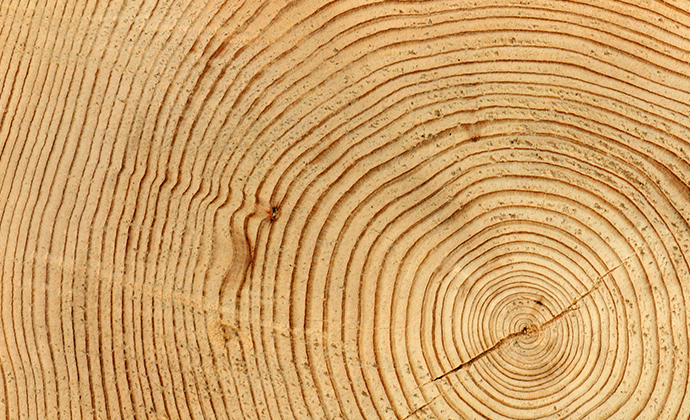
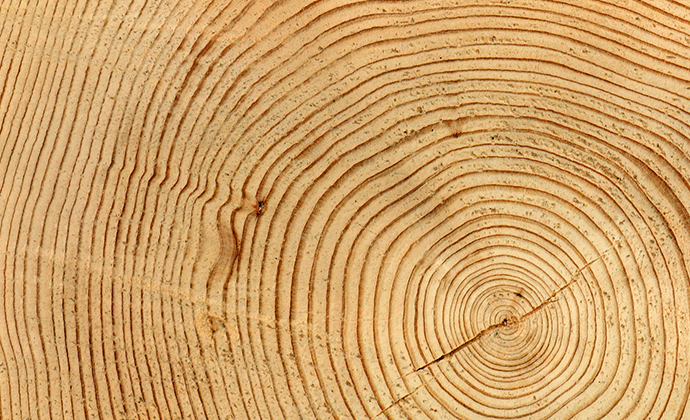
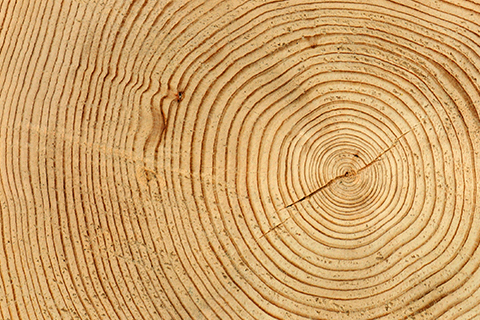
Is Nicotinamide Riboside Really an Anti-Aging Supplement?



Does the Key to Better Hair and Skin Lie Deep Within Our Cells?
